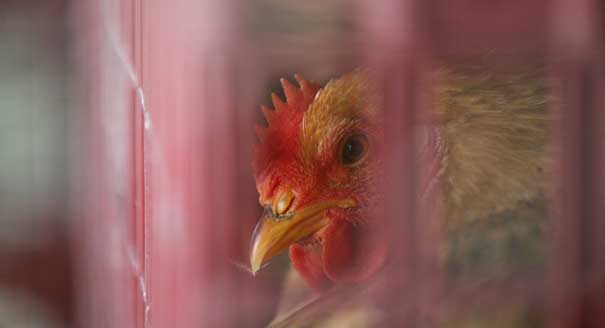USDA trip moves US closer to accepting Chinese chicken

Politico | 8/15/13
USDA trip moves U.S. closer to accepting Chinese chicken
By BILL TOMSON and TARINI PART
A chicken that was processed in China might soon be on your dinner plate.
Despite years of food safety scandals surrounding China and another recent bird flu outbreak there, the U.S. Department of Agriculture is moving closer to opening the U.S. market to Chinese-processed chicken by sending two of its senior food safety officials to Beijing next week for a bilateral meeting on the subject.
The meeting is a culmination of seven years of negotiations and could have an impact on the agriculture industry more broadly. U.S. industry officials hope a deal will soften tensions between the trading partners and convince China to lift restrictions on U.S. chicken, beef and other commodities. Representing the USDA, in Beijing, will be Al Almanza, administrator of USDA’s Food Safety and Inspection Service, and Dan Englejohn, FSIS’ deputy assistant administrator.
“The relationship, if it is mutual, could allow the Chinese to look at our exports more favorably instead of stymieing them,” said National Chicken Council Senior Vice President Bill Roenigk. “It would be a breakthrough for other U.S. agriculture products that would like to come to China as well. It’s not that we look forward to more imports because that means more competition for us, but we understand that trade is a two-way street.”
USDA officials inspected some Chinese poultry plants in March, and prepared a report, which officials say has been sent to China for review. The report — expected to be favorable — could pave the way for a handful of Chinese plants to be certified to process U.S. chicken.
Though the initial subject of conversation for the USDA officials, in Beijing, is to be the import of chickens that were grown in the U.S. and processed in China, the talks also are expected to cover the eventual U.S. import of poultry raised in China.
The U.S. and China have been locking horns for years over chicken trade.
China first began demanding in 2006 that the U.S. allow in Chinese chicken. In 2010, China claimed that the U.S. was unfairly selling its chicken in China at prices below market value before slapping steep tariffs on shipments. The tariffs – as high as 105.4 percent - cut off 80 percent of U.S. chicken exports to China and, in July, the World Trade Organization ruled the tariffs were unjustified. It remains unclear if China will abide by the ruling or appeal.
U.S. government and industry officials have long hoped if restrictions were lifted on chicken from China, the country would be more willing to buy U.S. beef.
“Progress on any front will hopefully spill over and provide some momentum toward resolving other issues. Clearly, our intent is restoring beef access to China, so our hope is China will look at that issue,” said Thad Lively, a vice president for the U.S. Meat Export Federation. “I do feel that any progress, removing any of these issues from the ledger – whether it’s a U.S. issue or Chinese issue – should contribute to an improved environment for trade relations.”
The U.S. hasn’t been able to sell beef to China since 2003 when the country erected a response to the first case of mad cow disease was discovered in the U.S. Most other beef-importing countries have lifted restrictions on U.S. beef, but the Chinese market remains closed as the country’s demand for imports has risen.
“We have been dying to get into that market,” said Joe Schuele, a spokesman for the U.S. Meat Export Federation said. China’s beef imports have skyrocketed recently, he said, and the country is buying from Australia, New Zealand and other countries.
Recent bird flu outbreak raises fears
But those who oppose processing chicken in China argue that the dangers of certifying Chinese plants outweigh the benefits of China possibly loosening restrictions on beef.
“The stories coming out of China we’re seeing say poultry employees have this flu that is more easily being transmitted,” said Tony Corbo, senior lobbyist for the food campaign at Food & Water Watch. “There’s been pressure on the USDA on making this happen. The big prize in their view has been for China to accept our beef.”
As of Aug. 11, 135 people in China have contracted bird flu this year and 44 of them have died, according to the World Health Organization. The disease can circulate in poultry and is transmissible to humans, but USDA officials have said the agency is only considering allowing imports of chicken that has been thoroughly cooked, which would kill any bird flu virus.
Rep. Rosa DeLauro (D-Conn.), one of the most vocal critics of allowing Chinese chicken in the U.S., said she remains skeptical even if the latest reports are positive.
“Previous USDA poultry inspections revealed conditions in China that could put American consumers at risk,” DeLauro said in a statement. “Even if a one-off visit shows an improved environment, there will be no U.S. inspector continually present when chicken is being processed for export to the U.S. I continue to remain deeply concerned that trade interests will trump public health at the end of this process.”





